Winner, SGMark 2023 Sustainable Design category

Papershell Table is an event furniture series that fights the negative impacts of ‘fast furniture’. It’s triangulated folded shell design allows it to be light weight and strong, even when fabricated with recycled cardboard and PET felt. The table is accompanied by seating created from cut-off materials: a zero waste fabrication strategy that produced unexpected formal options. Friction fit tab and slot joints permit many cycles of quick disassembly and reassembly without the need for tools or fasteners: an essential feature for event furniture. Low-carbon, non-toxic and recyclable materials make reduce its end of life impacts to the minimum.

The folded shells of the table nacelle and legs are inspired by the materially efficient structures of mid-century architecture like the CNIT shell structure in Paris. Unlike static, reinforced concrete shell structures, the Papershell table is designed to fold and unfold many times. Its pieces stack flat for storage and can be refolded and assembled within minutes for new installations.
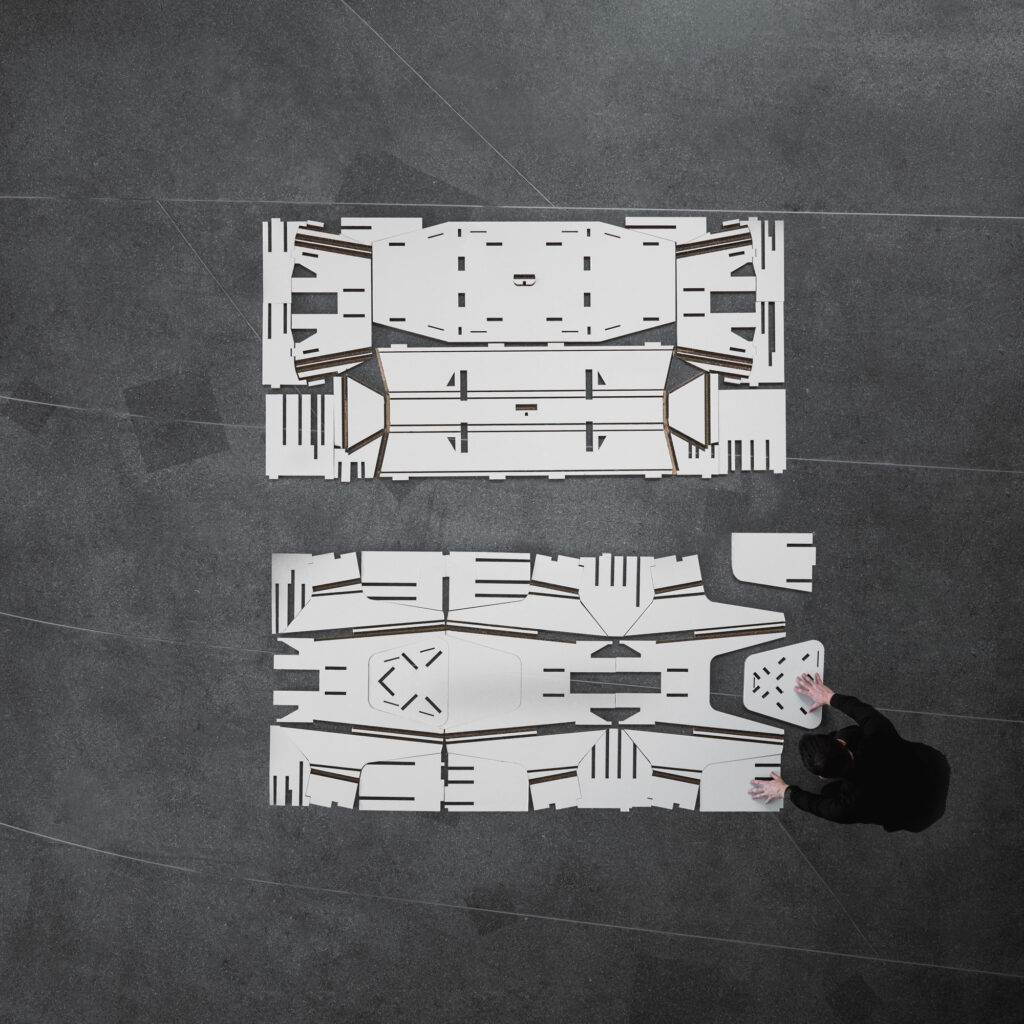

The form of the triangular plates presented a waste challenge, leaving many oddly shaped cut-off pieces that would have been discarded in conventional fabrication. We optimized fabrication set up and process to produce cut-offs pieces with controlled dimensions and shapes that could be incorporated into additional furniture. A series of seating pieces were produced with the cut-offs to accompany the tables at events.

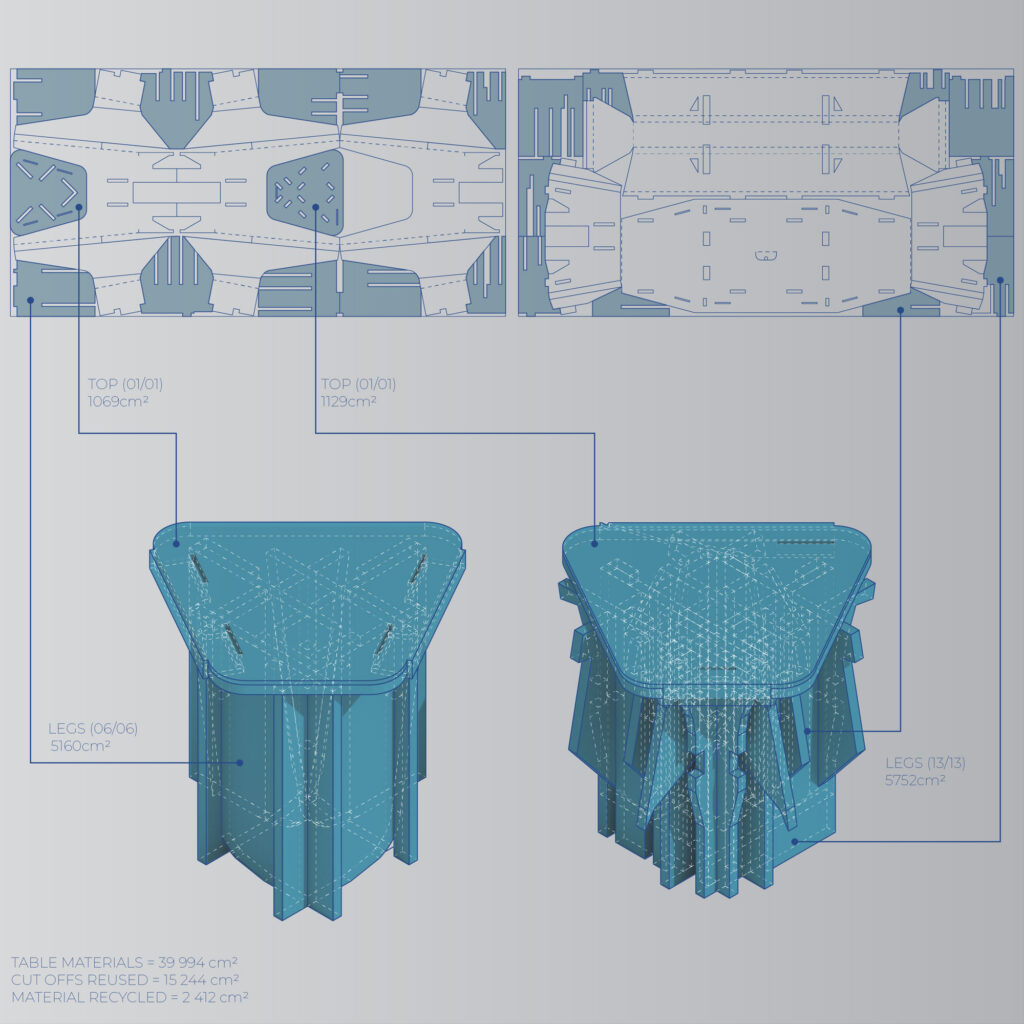
To permit many cycles of reuse for different events and locations, we designed the pieces to be aggregated in multiple patterns. The lozenge-shaped form was selected to permit aggregation both in a radial pattern and a triangular grid, making a variety of layouts possible from a pop-up exhibition booths, to a space filling study/seating area. For quick storage the design implements vertical stacking, with the shell of the nacelle nesting between the legs of accompanying pieces.

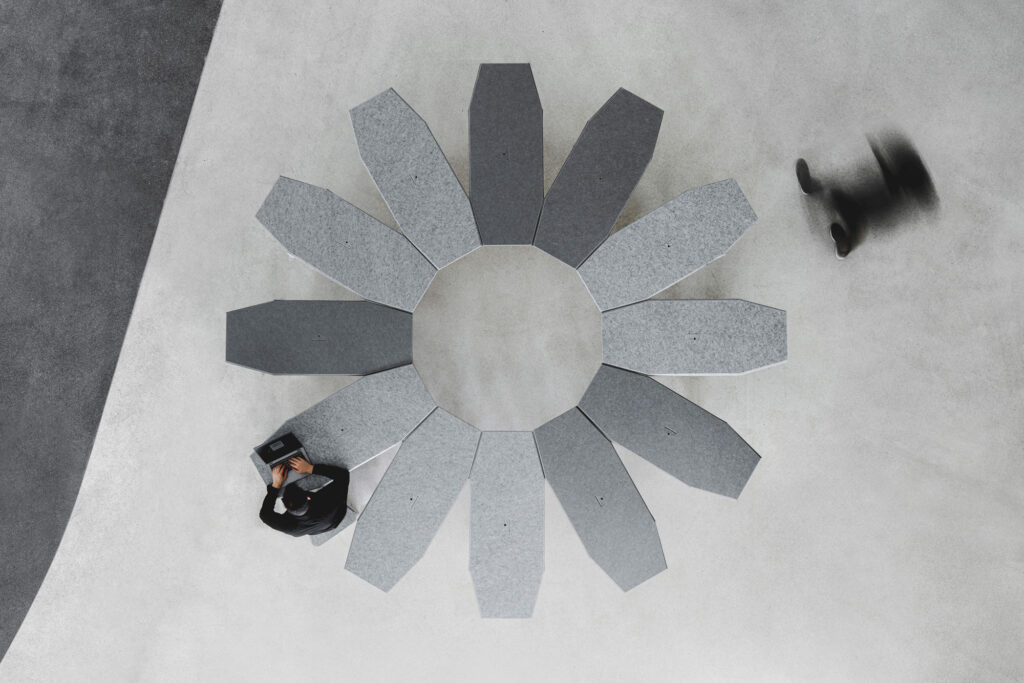
The design uses only friction fit tab and slot connections, making it quick to assemble and disassemble. The absence of glues and fasteners greatly simplifies recycling at end of life and decreases the change of material cross-contamination when recycling.
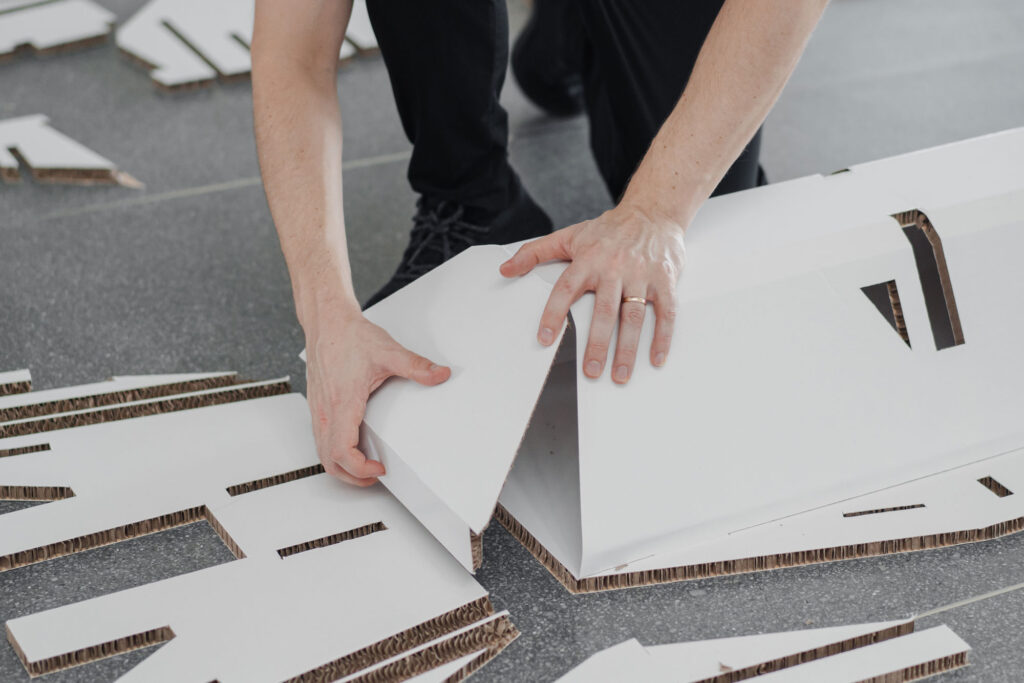
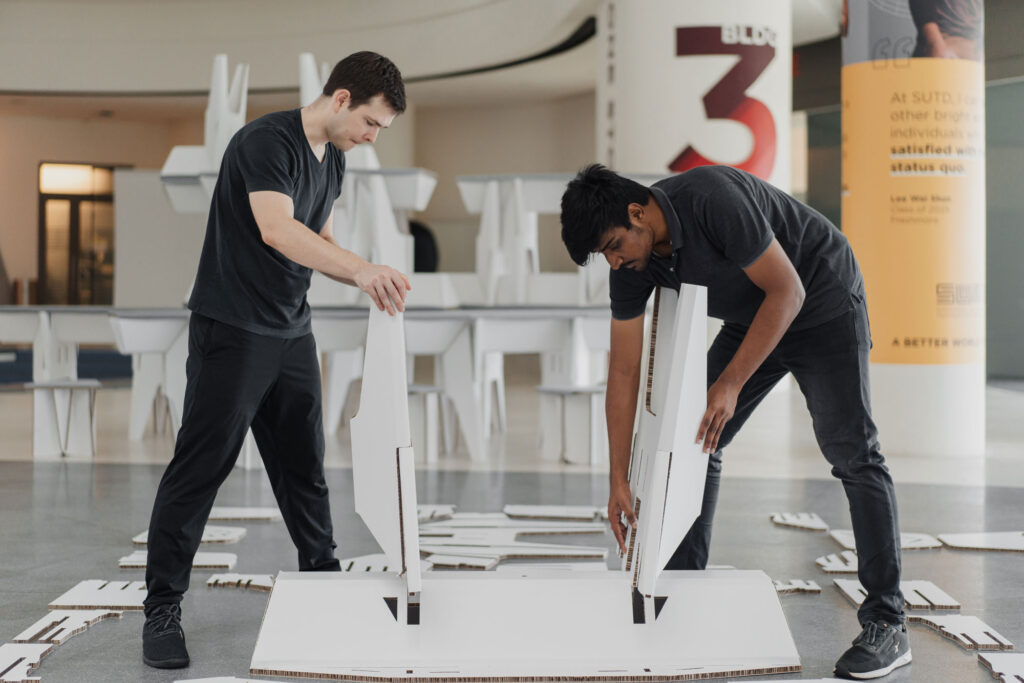
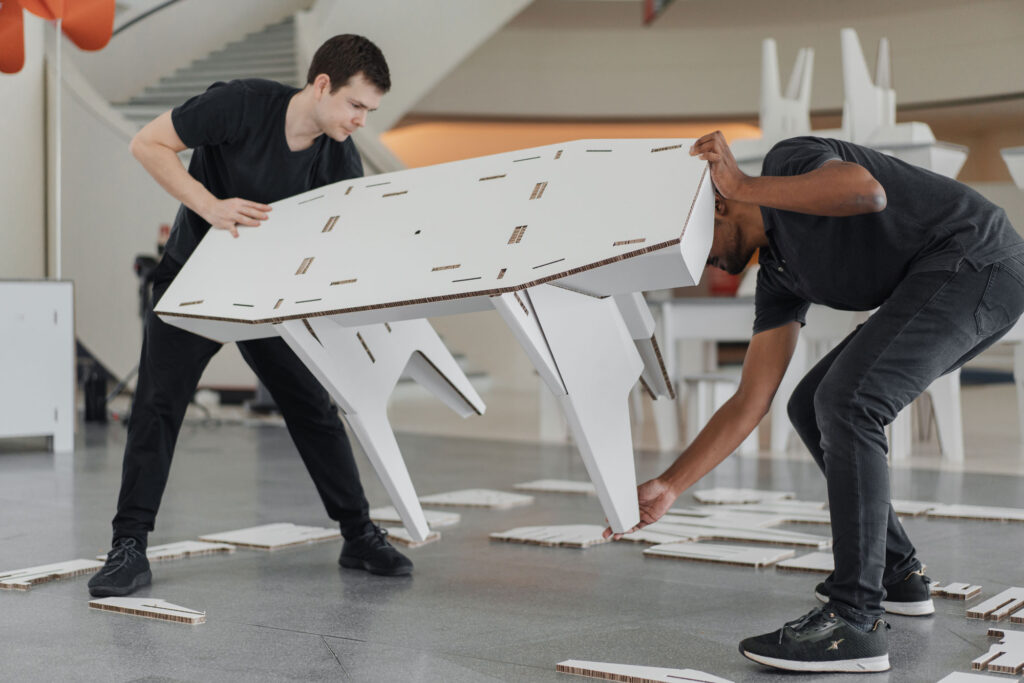
For quick storage the design implements vertical stacking, with the shell of the nacelle nesting between the legs of accompanying pieces.

Credits:
Design: F Peter Ortner
Fabrication: Lee Kah Wee, Praveen Govindarajan, Tay Jing Zhi, Zebin Chen, Nicole Ow, Brayden Tang, Jolene Teh, Yu Fang Oh

